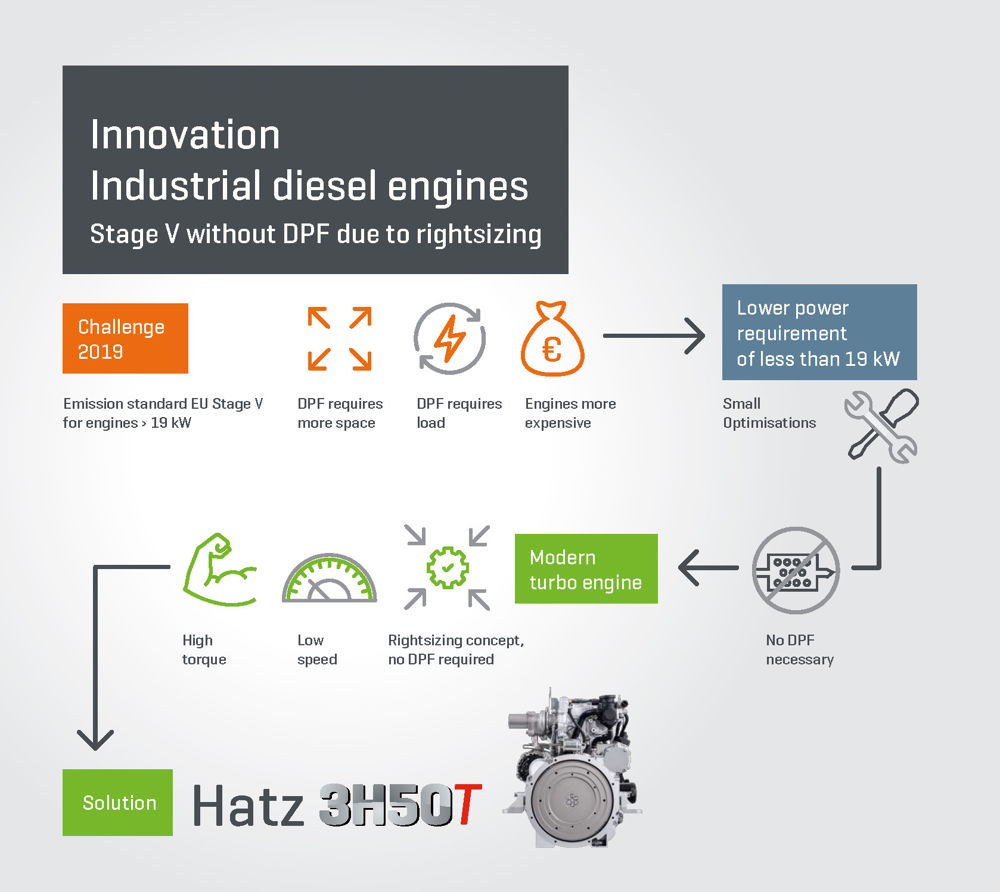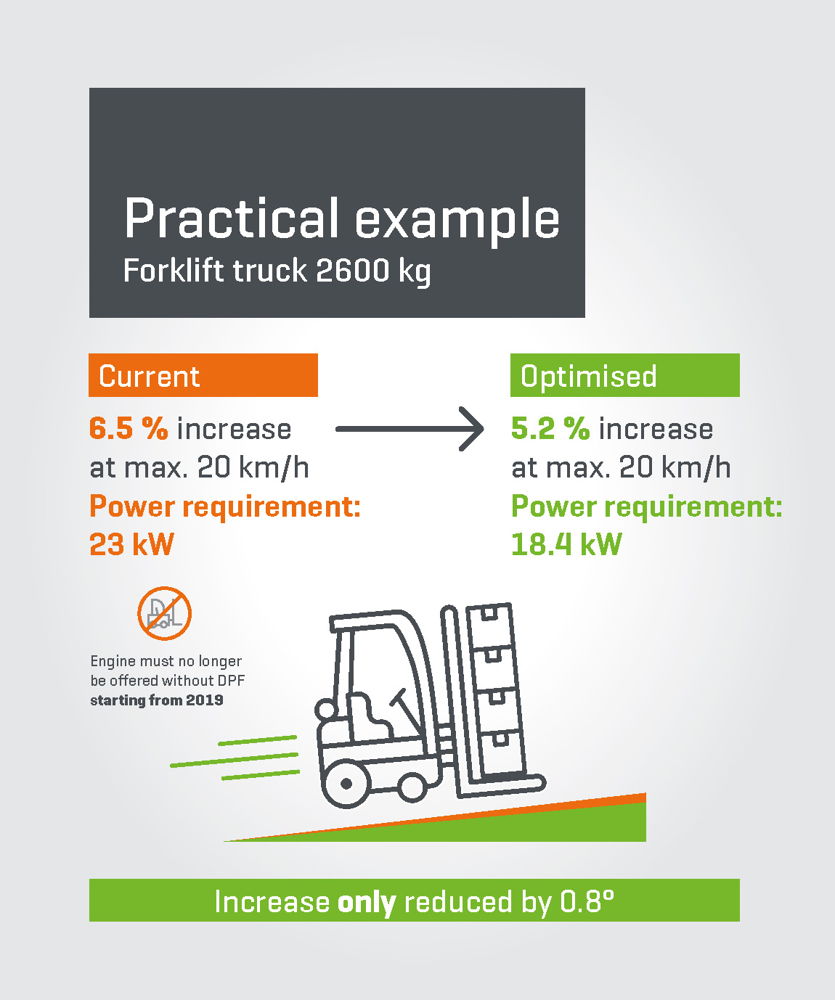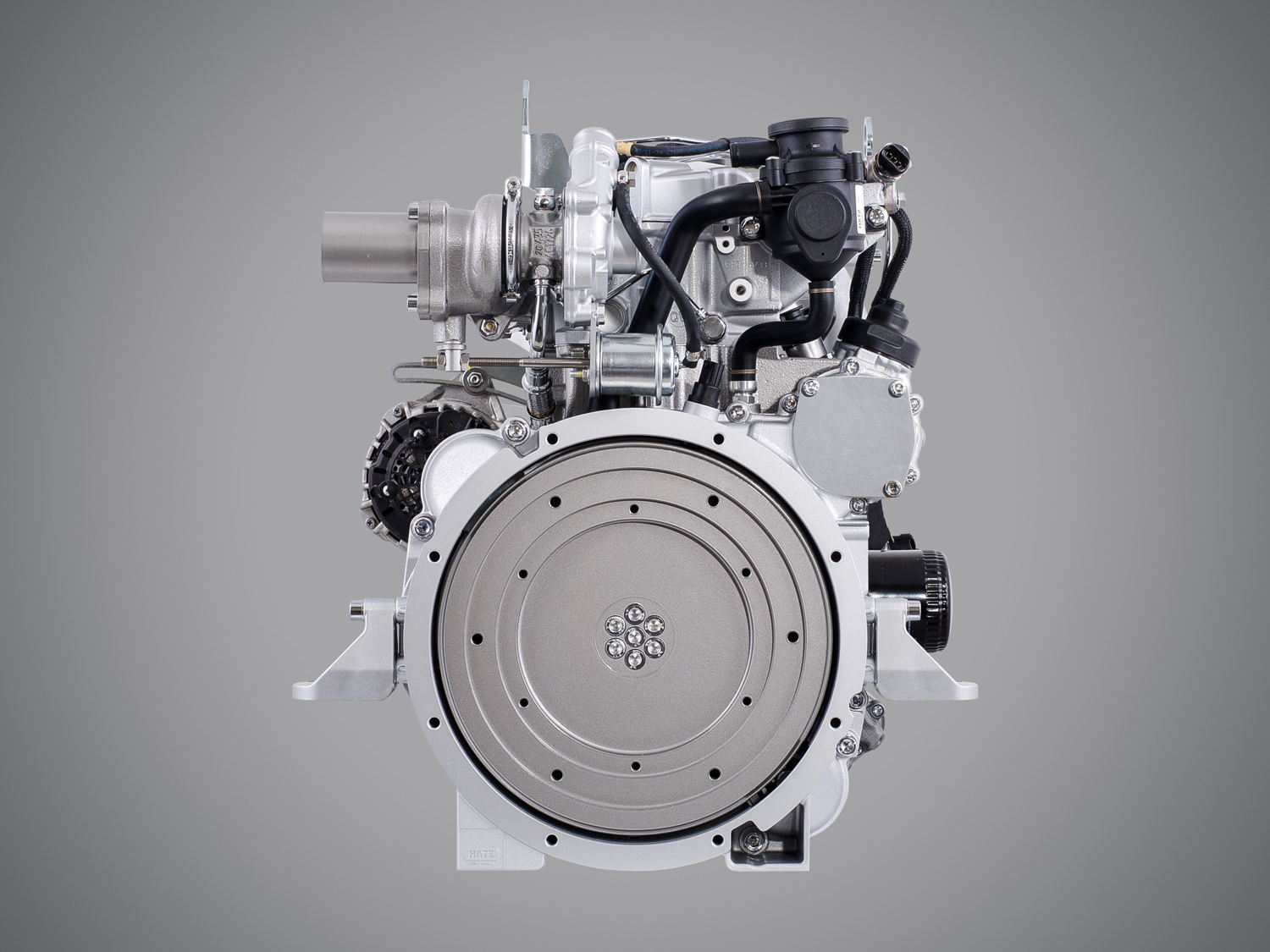Cleverly mastering the motorisation of compact machines despite Stage V
Through downsizing – or, to put it another way, rightsizing – many compact machines with a performance class of 19 to 37 kilowatts can also be appropriately driven with engines of less than 19 kilowatts. This saves machine manufacturers time and costs in implementing the Stage V standard.
1 September 2017
As ever, there are two sides of the coin, which is also the case with the new EU Stage V emissions standard. This standard is definitely good for mankind and the environment. But there are challenges in its application as well as in its implementation.
Stage V engines of more than 19 kilowatts are significantly more expensive and require considerably more space. The reason for this is the diesel particulate filter (DPF) which is imperative from a technical point of view and without which the emissions values in this power class cannot be met. A practical alternative is provided by cutting-edge and powerful engines with a power of just less than 19 kilowatts that fulfill the installed dimensions as well as the performance ranges with Stage V without diesel particulate filter.
Stage V standard: Commercial end for many machines?
The new emissions norm is causing serious headaches for many machine manufacturers. As of January 2019, it will no longer be possible to construct and sell a large number of compact machines of more than 19 kilowatts with hydraulic drive under the new Stage V directive. The value-added chain is interrupted, investments appear to be lost. The reason for this is that the design of Stage V engines is considerably more complex and, with the necessary auxiliary components for exhaust gas purification, they are also considerably bigger. In many compact machines, however, there is no space for a larger engine as well as the additional diesel particulate filter. Another problem is the additional costs. They are higher due to the complex exhaust gas cleaning which clearly decreases the sales margin. Aside from that, in the definition of the new standard, the legislator has presented many manufacturers of compact machines with an additional challenge. A diesel particulate filter that is technically required for Stage V in engines above 19 kilowatts only regenerates from a permanent exhaust gas temperature of 250 degrees. These temperatures are only seldom reached in short operating cycles, such as those of a lifting platform or forklift truck, for example. The consequence: Besides the relatively high costs of the diesel particulate filter, its lifetime is low due to low working temperatures and it wears quickly. Machine downtimes or elevated maintenance and service costs must be taken into account.
Stage V fulfilled by rightsizing
In the past many compact machines with hydraulic drive were equipped with now obsolete, overdimensioned engines with a power between 19 and 37 kilowatts (former EU Stage IIIA emissions standard) in order to achieve the required torque. However, from 2019, engines from 19 kilowatts and higher require a diesel particulate filter to ensure compliance with the Stage V standard and are, therefore, in many cases practically no longer usable. To protect the investments of machine manufacturers in the development, design and construction of compact machines despite the Stage V standard, and to continue to produce and sell the products at reasonable costs, there is a clever alternative. The solution is based on modern diesel engines of less than 19 kilowatts with sufficiently high torque in low revolutions due to common rail fuel injection and turbocharger. With the aid of the latest technology and the rightsizing principle, the power of the engines is precisely matched to the requirements of the machine without the bothersome diesel particulate filter.
For the use of somewhat smaller engines of less than 19 kilowatts, only minor adaptations are required in the specifications of the machines.
For example: A fork lift truck has a weight of 2,600 kilograms and was previously equipped with a diesel engine of 23.6 kilowatts. This means that, from 2019, this fork lift truck falls under the new emissions standard and may no longer be offered in future without emission optimization with diesel particulate filter.
The specifications in drive mode are for a maximum speed of 5.5 kilometers per hour with a gradient of 25 percent. This results in a required power of 23.6 kilowatts. If the speed in the specifications is reduced to 4.2 kilometers per hour with the same gradient, this results in a required power of 18 kilowatts, which makes an engine of less than 19 kilowatts possible. In practice, the speed reduction means an almost imperceptible slowing by just 30 centimeters (almost a foot length) per second.
The gradient can be used just as well as a variable. The same fork lift truck reaches a maximum speed of 20 kilometers per hour at a gradient of 6.5 percent. The calculated power is 23 kilowatts. If the gradient is reduced by 1.3 percent to 5.2 percent – in other words, by just 0.8 degrees – this results in a required power of 18.4 kilowatts. Because fork lift trucks are mainly used on relatively level ground, the marginal reduction of the gradient would hardly be noticeable in practical operation. An engine of less than 19 kilowatts makes sense.
These calculation examples are not isolated cases and can be applied very easily to other compact machines with reasonable costs for compliance with the Stage V standard. The basis for this are modern engines of less than 19 kilowatts, such as the Hatz 3H50T. This engine has been specially constructed for low emissions at a very high torque. This is reached not only by superimposing state-of-the-art technology on an already existing engine. Hatz is taking a new approach and has newly constructed its H-series engines from scratch. As a result, the engine can fully exploit the benefits of common rail injection technology, for example, which would not be possible with an older engine technology.
Modern engines with power, strength and endurance
New production processes and materials in Hatz engines below 19 kilowatts ensure resilience, even at high load. A smaller displacement in conjunction with sophisticated turbocharger technology and the higher-quality, more robust common rail system from Bosch in the off-highway version make highly efficient operation possible at low engine speeds – and all that in a compact design with a space requirement of only one quarter of a cubic meter. At the same time, fuel consumption and wear go down. Hatz also takes a pioneering role in limiting emissions. In the new engine concept and low-emission operation of the H-series engines, Hatz was one of the three finalists of the GreenTec Award 2015. The Hatz H-series engines without exhaust gas aftertreatment reach an extremely low particulate mass that actually undercuts the limit value by a factor of ten. In Stage V, this value is 0.4 grams per kilowatt hour.
In contrast to other engines of this class available on the market, the full power of 18.4 kilowatts of the new Hatz 3-cylinder engines is reached at only 1350 revolutions and continues across the speed range. Also, the fact that more than enough force is available is proven impressively by the supercharged Hatz engines with 1.5 litres displacement. A very high torque of 130 Newton metres is already reached at 1300 revolutions, which in many cases even exceeds the torque of older engines of the 19 to 37 kilowatt class. This ensures, for instance, that torque intensive capacities can be mastered without any problem. In comparison to a conventional engine solution without turbocharger, the low speed of the Hatz engine means that noise emission is reduced by around two thirds. These values make the Hatz 3H50T more powerful, less noisy and more efficient than all other 3‑cylinder engines in the power class of less than 19 kilowatts.
Guaranteed product lifecycle also with Stage V
Modern engine technology significantly extends the product lifecycle of many compact machines. Due to small changes in the power ratings of the machines that are virtually unnoticeable in practice, the use of engines with an output of less than 19 kilowatts is expedient in many applications. The Hatz 3H50T puts the manufacturers of compact machines in a position of intelligently implementing Stage V, and safeguards investments already made in the construction of their machines.
Author: Martin Hain, Product Manager und Team Leader Technical Sales, Hatz








